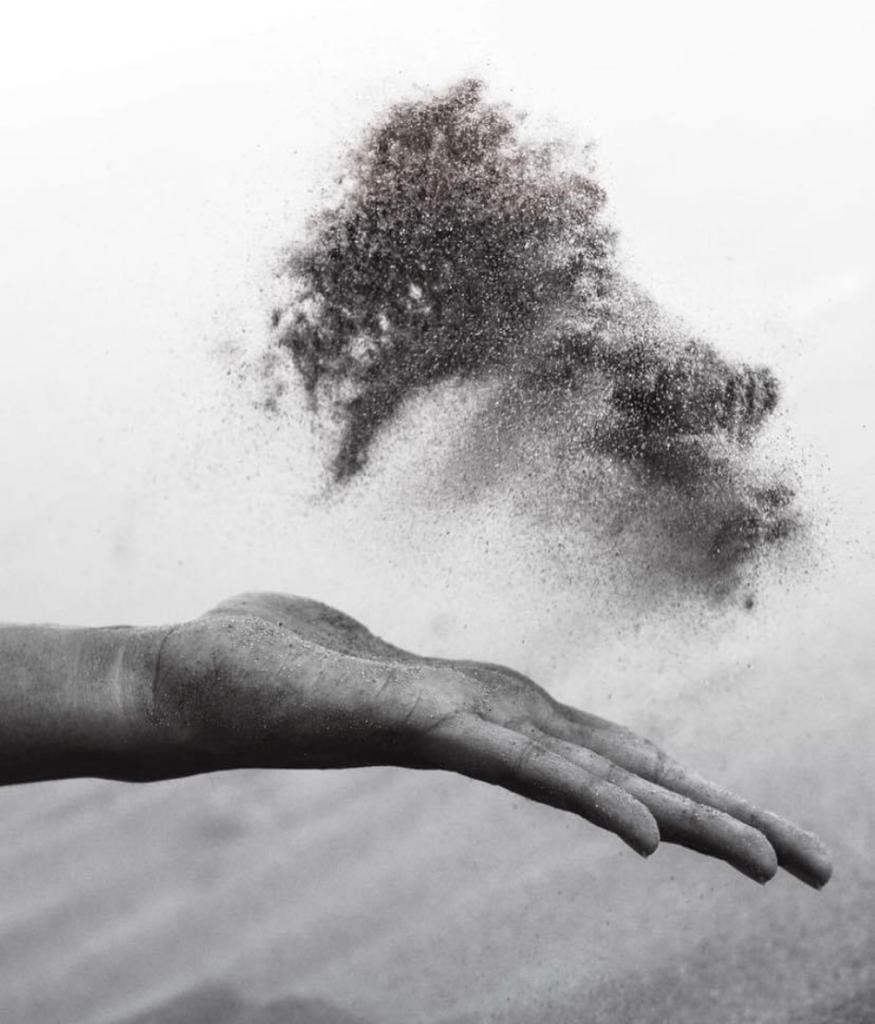Day-06 Introduction to hatha yoga-Mitraasha


Namaste All My Yoga Yaatris! May Yog Bless You!

Knowledge of Yoga is infinite, boundless and timeless. “Learning Yoga is an everlasting journey that leads you within and Within is where you find the world of immortal bliss”. –Mitraasha
The idea behind running this 51 Days Yoga Consciousness series is to proffer my modest learnings and share the divine pearls of Yoga science with people at large. Let’s have a conjoint intent to learn, implement and extend the wisdom of Yoga with a positive co-action and harmonious reverberation amongst each other.
Around 250 B.C.Sage Patanjali gathered and laid out in sutra forms (in Patanjali Yoga Sutras), the techniques of yoga and hence gave to the world the conceptual platform highlighting foundational Ideology and philosophy that is in the root of the practical regimen of Yoga. Patanjali Yoga Sutra is a one of it’s kind work written remarkably giving out the key and indispensable principles of Yoga.
Around 9th or 10th Century A.D.roughly, Matsyendra Natha-the great Guru and Goraksha Natha -the ardent disciple, both great yogis, became the prominent names in the yoga sphere. Natha parampara is related firmly to Yoga Sadhana. Lord Shiva is revered as the first Natha/Yogi as Adi-Natha/Adi-Yogi. This tradition (sampradaya and parampara) is well known by few other names too, viz: Siddha Mata, Siddha Marg, Yoga Marg, Yoga Sampradaya and Avadhut Mata. Yoga Marg or Path of yoga is understood as a more pertinent and applicable name, Yoga practice being the first duty of its followers. After Adi Natha, Matsyendra Natha is the second most significant name in this tradition. As per the legends in Nepal, Matsyendra Natha was also the incarnation of Avalokiteshvara. He is a supremely venerated Guru in the Kashmiri Shaivism. His prominent works are Kaula Jnana Nirnaya, Akulveer Tantra and others signifying his association with Tantra.
Throughout India, there are many legendary stories about Matsyendra Natha and Goraksha Natha. Gorakh Natha is respected as the most eminent guru in the tradition of Hatha yoga. He travelled to most parts of Indian subcontinent and made an effort to bring together practitioners of all sects and groups and unite them in some way. He is also known as a great Reformer as he also tried to reform Yoga by excluding all the wrong practices, undesirable methods and elements that had become prevalent and associated with yoga during the era before him. The revised, reformed and codified ensemble of yoga techniques and principles is what is presently known as Hatha Yoga. Many eminent yoga scriptures are credited to Gorakshanatha and his followers who are also known as Nathas or Natha Pantha.
The Navnath parampara in Maharashtra, Karnataka and many other places is said to have originated from Adi Natha. A few of the significant names in the tradition of Nava Natha are Matsyendra Natha, Goraksh Natha, Jalandhar Natha, Kanif Natha, Gahini natha, Revanatha. The great saint Jnaneshwar also known as Jnana Natha and his elder brother Nivrtti Natha belonged to this tradition. Nivrtti Natha was the disciple of Gahini Natha, who was in turn the disciple of Guru Goraksha Natha.
According to some scholars some other prominent names associated with this tradition from Maharashtra are Mukta Bai, Chang dev Bateshwar, Visoba Khechar, Naamadeva and sant Chokhamela. There are differences of opinion regarding the names of Nava Nathas. Scholars ascribe many yoga texts ( as many as 40) to Goraksha Natha. The prominent being Amanaska, Amaroghashasanam, Amarok Prabodha, Goraksha Padhati, Goraksha Samhita and Siddha Sidhanta Padhati. In vernacular some very important works are Gorakh Bodha, Sabdi, Pada, Prana Sankali, Machindra – Gorakh Bodh.
Hatha yoga is the practice of the principles laid down by the great Nathas.
The most important text of Hatha Yoga viz Hatha yoga pradipika has been written by Swatmaram, a follower of the tradition of Hatha Yoga of Goraksha Natha. At the beginning of the work he states that he belongs to the tradition of Matsyendra Natha and Goraksha Natha. Beginning with the Adi Natha, he lists out thirty-three names of the Nathas Yogis prior to him. Hatha Yoga Pradipika is like a Yoga manual and mainly talks about the various Yoga techniques and methods of Hatha Yoga to attain what is known as Samadhi or Raja Yoga. Right at the beginning of the text, he tells that Hatha yoga is the ladder to go towards Raja yoga. Total control of the mind is the aim and the Hatha yoga techniques help one to attain this objective. The name Hatha Yoga is indicative of the methodology adopted to reach the highest possible concentration and Mind Control. There are two opposite energies or forces working in the human body. The highest possible concentration or Samadhi can be attained by harmonising and uniting these two forces or two extremities represented by Ha and Tha. Ha is Sun or what is known as Prana and Tha is Moon or the energy called Apana. Ida and Pingala Nadis too represent these to polarities. By the use of various techniques of Yoga these Ha and Tha are to be united to create a perfect harmony and attainment of perfect Concentration. Yoga Bija of Gorakshanatha states that uniting the Sun and Moon ( Ha and Tha ) is called Hatha Yoga.
Thus, Hatha Yoga deals with the Prana and Apana working in the body in order to attain Raja yoga (Control of Mind or stoppage of Vrttis).
Beginning with the works of Gurus Matsyendranatha and Gorakshanath (disciple of Matsyendranatha), there are many works related to Hatha Yoga. However, most of them are very difficult to understand due to their writing styles. Goraksha Shataka, Yoga Bija and Goraksha Samhita are three examples of such challenging manuscripts. Even the Shiva Samhita, which is a notable achievement, is difficult to comprehend. From a practical point of view, there are two main works generally studied to learn about Hatha Yoga – Hathayoga Pradipika and Gheranda Samhita. There is also the Hatha Ratnavali by Srinivasa Bhatta Mahayogendra, which is a lesser-known work listing 84 Asanas and other details about Pranayama, Mudras, Chakras, etc. It also makes mention of Vashistha, Dattatreya, Matsyendranatha, Gorakshanatha and others.
Hatha Yoga Pradipika is regarded as one of the earliest works on Hatha Yoga written around the fifteenth century A.D., by Yogi Swatmaram. He mentions that he was himself a Natha Yogi following a lineage of Matsyendranath and Gorakhnath. He claims his knowledge to write about Hatha Yoga comes from the tradition of profound yogis and describes several Siddhas and Nath Yogis through his work. Hence Hatha Yoga Pradipika is rightly considered as a very valuable and significant text on Hatha Yoga. The Hatha Yoga Pradipika is like a well mapped directory to several techniques of Hatha Yoga, giving practical guidelines.It teaches about varied Yoga concepts of Asana, Mitahara, Shadakarma, Pranayama, Nadi Shuddhi, Kundalini Shakti, Samadhi or Nadanusandhana etc., although in the end it surely emphasises on the fact that all hatha practices aim only for the attainment of Raja yoga. Hatha Yoga Pradipika is divided into four chapters, consisting of 390 verses.
The first chapter covers the meaning of Hatha Yoga, its relation to Raja yoga, the tradition of Hatha Yoga, detrimental and accommodating factors adding to the failure or success, Role of Yoga Asana, and Mitahara. The second covers two important aspects of Hatha Yoga viz. Shad-karma and Pranayama. The third covers the Mudra, Bandha, Kundalini and its arousal. Finally, the fourth chapter deals with Samadhi and explains the various stages and techniques to attain that state.
Gheranda Samhita is believed to be a Hatha Yoga work from the 17th Century. It came much later than Hatha Yoga Pradipika. Records have it that it is composed by a Vaishnav Rishi named Gheranda. It is in the form of a dialogue between Rishi Gheranda and his disciple Chanda Kapali. It talks about the yoga of Seven steps i.e. Saptanga yoga and co-relate the body to an earthen pot which needs to be baked and strengthened by the Fire of Yogic knowledge to become strong and serve the right purpose. Rishi Gheranda calls his yoga Ghatasya Yoga or Saptanga yoga. It is much more detailed than Hatha Yoga Pradipika going by the number of Asanas and Kriyas, Mudras etc. Both the texts are in agreement about the need for Diet, Nadi shuddhi etc.
It incorporates seven Chapters, each dealing with one distinguished set of techniques (sapta saadhanam) and an established goal.
Chapter 1: Shodanam (Purification) by Kriyas or Shatkarma.
Chapter 2: Dridhata ( Strength and Firmness) by Asana.
Chapter 3: Sthairyam (Stability/steadiness) by Mudra and Bandha.
Chapter 4: Dhairya ( Perseverance/ Patience) by Pratyahara.
Chapter 5: Laghvam ( Lightness) by Pranayama.
Chapter 6: Pratyaksha ( Higher Perception/Insight) by Dhyana.
Chapter 7: Nirlipta ( Isolation / Liberation ) by Samadhi.
Thought of the day: “Hatha Yoga teaches us to use the body as the bow, asana as the arrow, and the soul the target”- B.K.S. Iyenger
Link to Day 05: Four Paths Of Yoga https://kreately.in/51-days-yoga-consciousness-series-2nd-may-21st-june-2021-mitraasha-day-05/
Link to Day 07: Introduction to Ashtanga Yoga: https://kreately.in/51-days-yoga-consciousness-series-2nd-may-21st-june-2021-mitraasha-day-07/
DISCLAIMER: The author is solely responsible for the views expressed in this article. The author carries the responsibility for citing and/or licensing of images utilized within the text.
